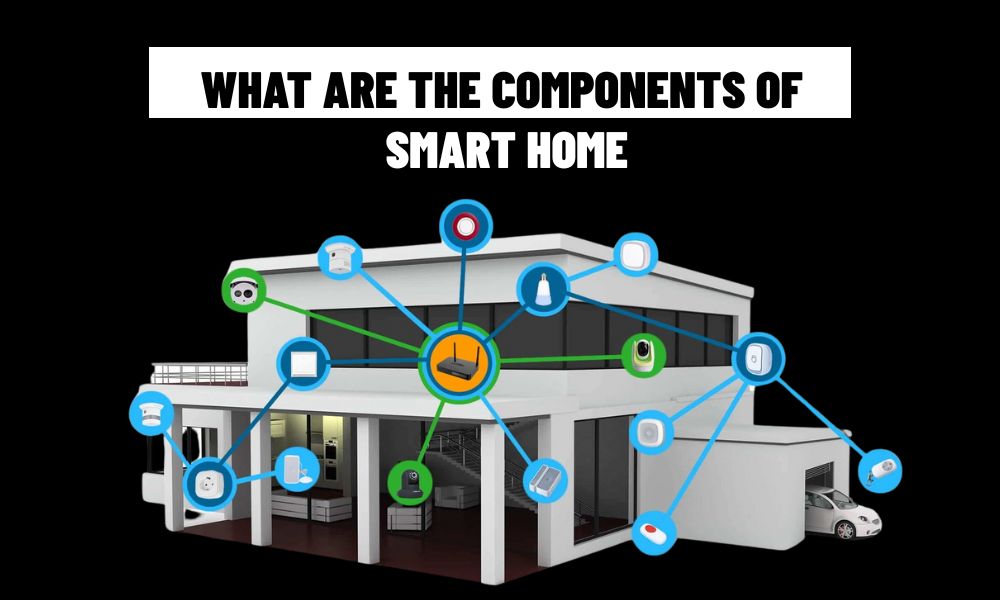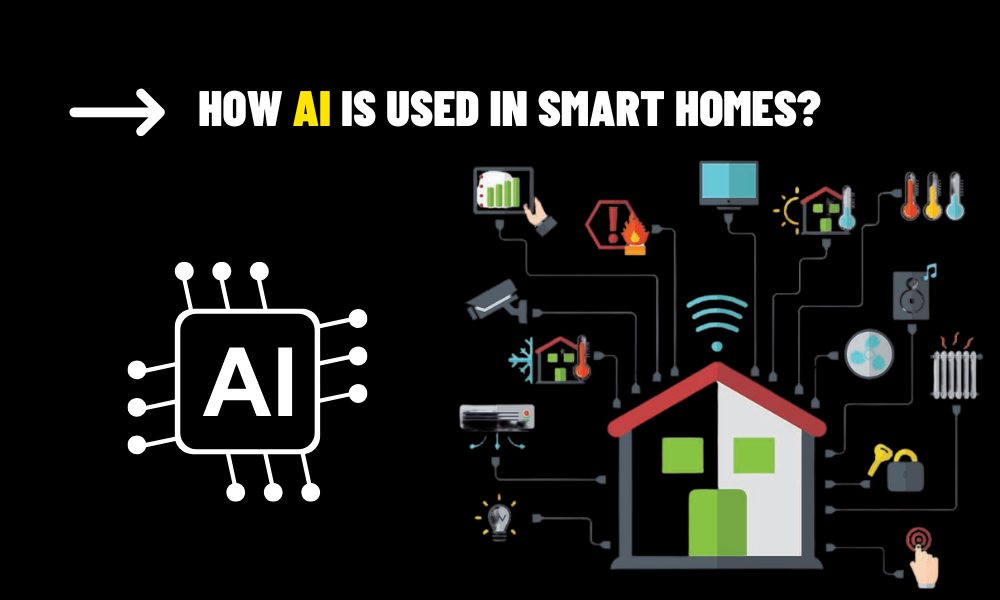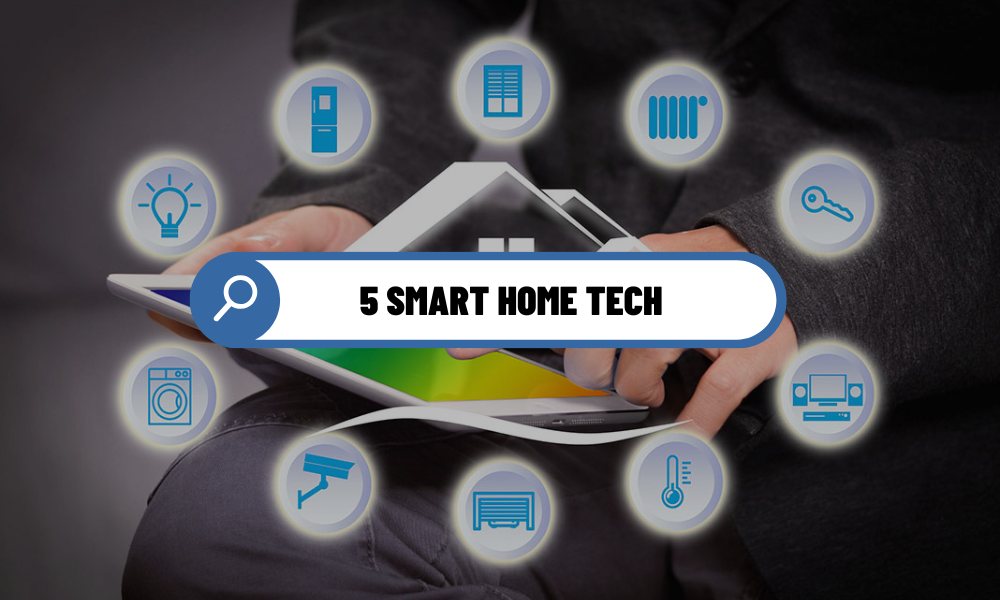Contents
Defining the Building Blocks of Smart Homes
Smart homes transform living spaces into intelligent, responsive environments through interconnected components that automate tasks, enhance security, and promote health. These core elements—sensors, connectivity networks, smart devices, control hubs, and software platforms—work in unison to create a seamless ecosystem. With a focus on wellness, components like air quality sensors and Human-Centric Lighting (HCL) are redefining modern homes. This article explores these components, their roles, benefits, challenges, and future advancements in health-focused smart homes.
Components of a Smart Home
Sensors: Detecting Environmental and Health Data
Sensors are the sensory organs of a smart home, capturing real-time data to drive automation. Motion sensors, like those in Ring systems using passive infrared (PIR), detect movement to trigger security alerts. Air quality sensors, such as Awair’s, monitor pollutants like VOCs, activating purifiers to ensure clean air. Humidity sensors in Ecobee thermostats maintain optimal moisture levels, preventing mold. Wearable health sensors, integrated via devices like Fitbit, track heart rate or sleep, syncing with home systems to adjust environments. These sensors provide the data foundation for intelligent responses, enhancing both comfort and wellness.
Connectivity Networks: Enabling Seamless Communication
Connectivity networks link smart home components, ensuring efficient data exchange. Protocols like Wi-Fi support high-bandwidth devices, such as 4K cameras, while Zigbee, used in Philips Hue, offers low-power mesh networking for sensors. Thread, found in Apple HomeKit, provides secure, scalable communication. These networks enable real-time coordination, allowing a humidity sensor’s data to trigger a dehumidifier or a wearable’s stress reading to adjust lighting. Robust connectivity ensures reliability, with standards like Matter enhancing cross-brand compatibility for a unified ecosystem.

Smart Devices: Executing Automated Actions
Smart devices translate sensor data into tangible actions. Smart thermostats, like Google Nest, adjust temperatures based on occupancy sensors, saving energy. HCL systems, such as LIFX tunable LEDs, mimic daylight to support circadian rhythms, improving sleep. Smart water filters, like Culligan’s, monitor contaminants, ensuring safe hydration. Appliances, such as Samsung’s IoT refrigerators, optimize food storage based on usage patterns. These devices, powered by sensor inputs and AI, create responsive environments that prioritize health, efficiency, and convenience, reducing manual intervention.
Control Hubs and Software: Orchestrating the Ecosystem
Control hubs, like Amazon Echo or Google Nest Hub, act as the brain of a smart home, processing sensor data and coordinating device actions. They integrate voice assistants, enabling commands like “optimize air quality.” Software platforms, including mobile apps and cloud-based AI, provide user interfaces and analytics. For example, the Home app lets users monitor water purity or set routines, like dimming HCL at bedtime. Cloud platforms enable predictive automation, such as adjusting thermostats based on weather forecasts, while local processing ensures rapid responses, enhancing system reliability.
Wellness and Efficiency Benefits
These components deliver significant benefits, particularly for health and efficiency. Air quality and humidity sensors reduce respiratory issues, with purifiers cutting allergy triggers by 25%. HCL improves sleep quality by 15%, per studies, supporting mental health. Smart water filters ensure clean water, boosting immunity. Energy savings from smart thermostats and lighting can reach 20%, lowering costs and environmental impact. Security is enhanced through motion-triggered alerts, while automation simplifies daily tasks, creating homes that proactively support resident well-being and sustainability.
Overcoming Integration and Privacy Challenges
Challenges include interoperability, where devices from different brands may not sync, addressed by Matter’s universal standard. Privacy risks arise from health data collection, mitigated by end-to-end encryption and local processing, as in Apple HomeKit. High costs can limit adoption, but modular systems allow gradual upgrades. Connectivity disruptions require offline capabilities, while user-friendly apps simplify setup for non-technical users. Transparent data policies and AI-driven sensor calibration ensure trust and accuracy, critical for widespread acceptance.
Advancing Health-Focused Smart Homes
Future smart home components will leverage AI to predict health needs, like adjusting air quality before pollen spikes. 6G connectivity will reduce latency, supporting real-time health monitoring. Energy-harvesting sensors will enhance sustainability, while blockchain will secure data. Wearables with medical-grade sensors will tailor environments to chronic conditions, and HCL will use personalized algorithms for hormonal balance. These advancements will make smart homes proactive health partners, integrating with smart cities for shared wellness data.
The components of a smart home—sensors, connectivity, smart devices, hubs, and software—create a health-centric ecosystem that automates tasks, enhances security, and promotes wellness. By integrating air quality monitoring, HCL, and health-focused devices, these systems redefine living spaces. Despite challenges like privacy and compatibility, innovations in AI, connectivity, and sustainable design are driving progress. As these components evolve, smart homes will become intelligent sanctuaries, prioritizing resident health and reshaping modern living.



